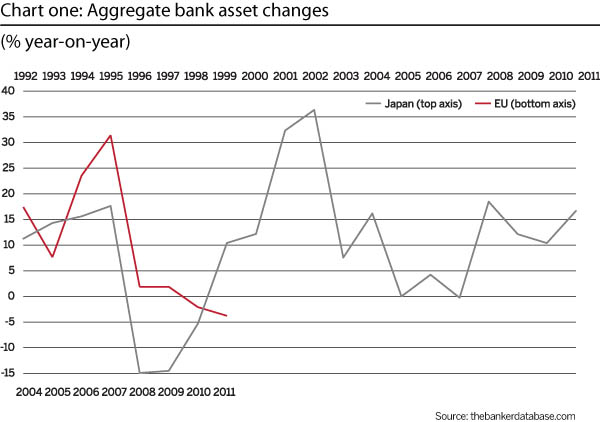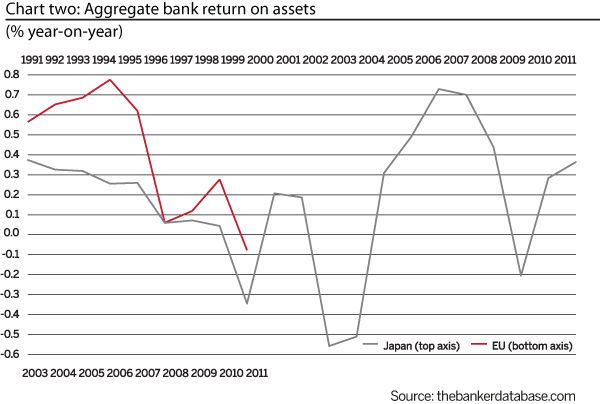The decline of Japan’s banking sector in the 1990s may provide some indication of how European bank deleveraging will unfold over the next few years.
The parallels between the economy of the EU today and the 'lost decade' that Japan suffered when its economic boom turned to bust in the early 1990s are well known. Both periods of high growth involved real estate bubbles and a surge in bank leverage. Both led to a painful unwind and significant banking sector losses once property prices began to fall.
If anything, EU banks face a tougher challenge than their Japanese equivalents in the early 1990s. True, European corporates are generally in a better condition than some of the over-indebted Japanese zombie companies of the 1990s. But while the Japanese government lost its AAA credit rating, it certainly did not suffer anything like the eurozone sovereign debt crisis now unfolding, which has devastated the balance sheets of some European banks.
And Japanese banks remained relatively flush with liquidity thanks to the high savings of local retail customers. By contrast, European banks were more dependent on wholesale funding that is now scarce, especially as US money-market funds have heavily cut back the supply of dollars they are willing to invest across the Atlantic.
Bearing in mind those differences, The Banker can attempt to sketch the trajectory for the European banking sector over the next few years. The first striking point is that European banks have not been shedding assets anything like as quickly as their Japanese counterparts did. That could be a warning sign that there is more painful deleveraging to come in Europe.
But of course, there has also been a great deal of capital raising in Europe to strengthen balance sheets, by contrast with the sharp shrinkage of Japanese bank capital in the 1990s. Consequently, European banks are better able to support their large asset bases, although the regulatory environment is putting far more pressure on banks today than it did 15 years ago.
In terms of profitability, the Japanese experience suggests, once again, that the pain may be just beginning for Europe. European banks on aggregate dropped into negative return on assets for the first time in 2011. Japanese banks suffered an aggregate loss for the first time in 1999, after three years of very low positive returns. Over the next four years, they suffered two further annual losses before enjoying a more sustained return to profit. It took until 2007, however, for their return on assets to surpass that of the EU – a full decade after they began shedding assets.




